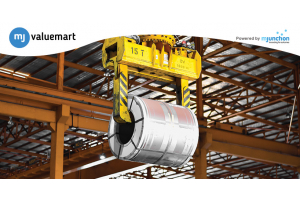What is dead inventory? Steps to avoid it

Dead stock refers to any unsold items that are lying in the warehouse or storage rooms for a long time. Dead stock is bad for your business not just because it takes up valuable space but also acts as a bad investment. When warehouses or storage rooms are cluttered with dead stock, employees find it difficult to find parts and products they need, wasting time and energy. Having a smart inventory management system in place is important to regularly eliminate dead stock and make way for active inventory.
If you are constantly struggling with dead stock and can’t figure out how to avoid it, here’s a useful read for you:
Understand the underlying causes behind dead stock: There are many underlying causes that contribute to dead stock. Getting an insight into these underlying causes can help you address the problem in the procurement phase. Here are some common causes that can lead to dead stock:
- Overstocking: When ordering stock, it is important to look at sales data and inventory turnover rate. Ordering too much inventory at once may mean you’ll have more industrial spares than you need. In such a scenario, items are most likely to expire or become technologically redundant.
- Inaccurate demand forecast: It’s important to look at sales history to estimate reorder quantities. Ordering standard inventory for a lean season runs the risk of ending some of the MRO inventory ending up as dead stock.
Adopt a strategic approach towards buying and selling inventory: Dead inventory is a significant liability for businesses. Unless you sell dead inventory, you’ll lose the initial acquisition costs, including freight, duties and insurance. Here are some steps that you can take to avoid dead stock:
- Buy strategically: The best possible way to avoid excess stock that ages out of usefulness is to buy the right quantities of products. For this, you need to develop an effective strategy for maintaining and tracking stock levels in real time.
- Cut back on the stock during the lean season: It’s important to know how much stock you will need in a given period. During peak season, order more stock. During the lean period, cut back on the stock.
- Decide whether to sell or hold on to inventory: Weigh in all the pros and cons of holding on to excess inventory. In some cases, having extra inventory, even at the risk of overstocking, makes sense. Safety stock sometimes comes in handy. However, if there’s a change in technology and the inventory has run out of its usefulness it is best to sell them before its value further goes down. As the value goes down, the costs of stocking dead inventory will outweigh its value.
What to do with obsolete stock? Sell it on mjvaluemart
Instead of letting dead stock take up valuable warehouse space and sit on the balance sheet, sell it on mjvaluemart, a multi-vendor e-marketplace for unused MRO Spares. The online platform connects the sellers with the right buyers across the country. When you move to an online platform like mjvaluemart, you no longer have to sell obsolete inventory to scrap dealers at throwaway prices. With the participation of end-users on mjvaluemart, sellers will get better prices for their products. Once registered, you can upload unlimited MRO spares under relevant categories. You will find specific categories such as track roller bearing, ball and roller bearing, and gear box.
To sell your excess inventory, register online and become a seller on mjvaluemart today!
To know more, drop an inquiry at info@mjvaluemart.com or call us at +91-9830232300.





